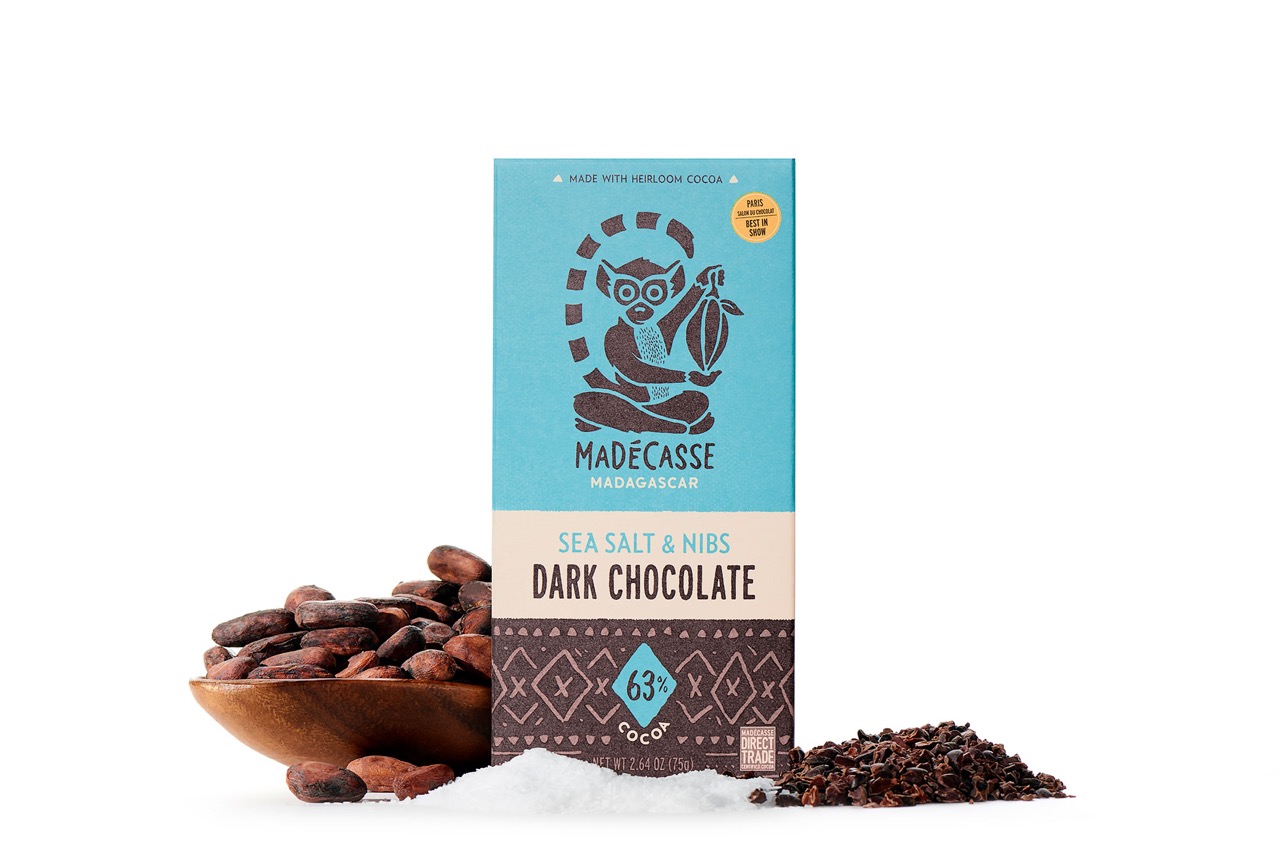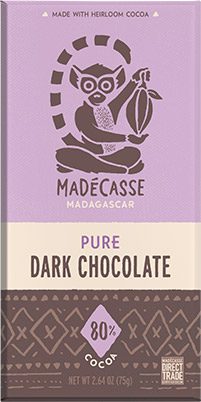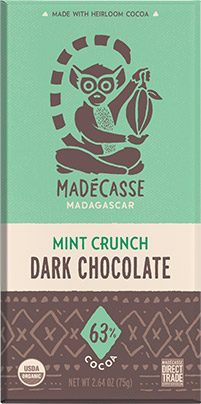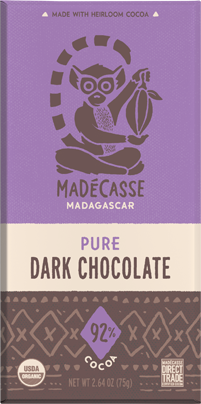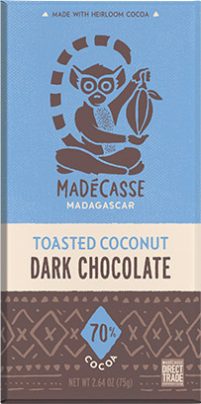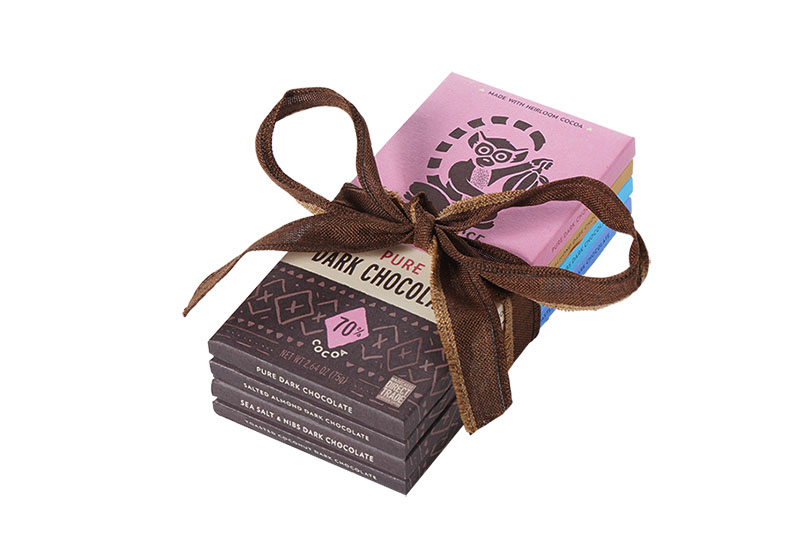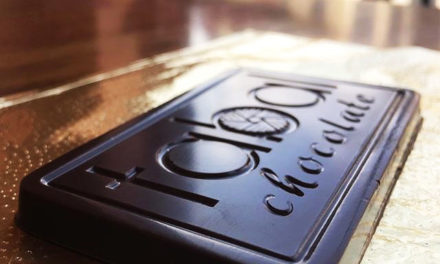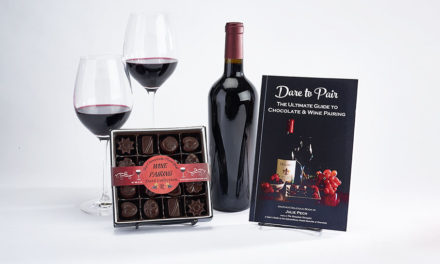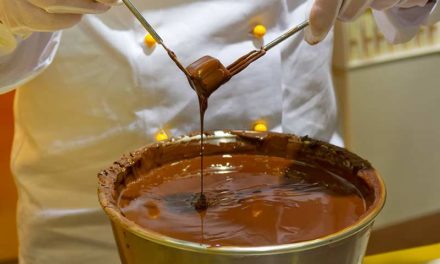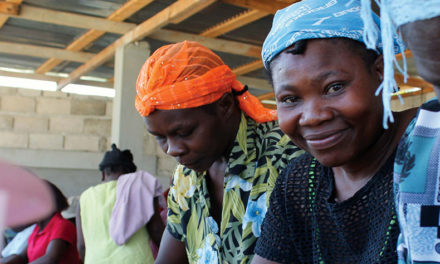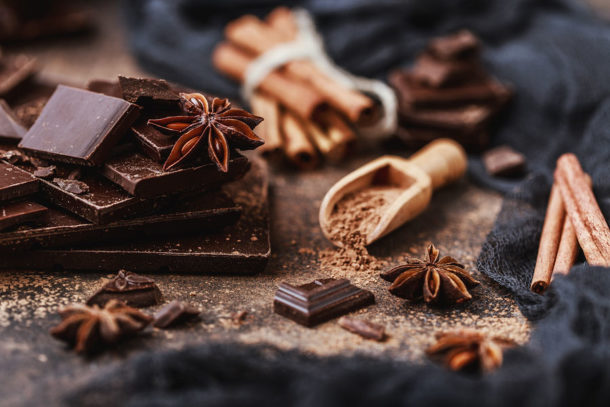“We cannot separate the pursuit of fine flavor from the pursuit of making a social impact. One begets the other.”
— Tim McCollum, Madécasse co-founder
Opening a window to the lives of artisan chocolate company founders, busy doing their own part to change the world… that’s my favorite part about writing for Chocolate Connoisseur magazine. I love uncovering great stories to share with all of you.
On my first, quick visit to Madécasse’s website, the chocolate company appeared to be an industry game changer, a brand making a real difference. Yes, looks can, of course, be deceiving, but after an interview with Tim McCollum, one of the company’s founders, this book most certainly matches its cover –– the Madécasse brand runs soul-deep, with a dual focus on impacting both farmers’ lives and consumers’ taste buds.
It should come as no surprise that Tim’s two favorite aspects of his work mirror those sentiments exactly. He loves how Madécasse changes the way a consumer thinks about chocolate upon first experiencing a Madécasse heirloom variety (the tastebuds-awakening journey away from a Hershey bar can be short but oh so sweet), and he also loves how his company changes the ways cacao farmers participate in the industry.
Madécasse in the Making
Tim’s upbringing took place far, far away from Madécasse’s base of operations in Madagascar. He grew up in New Jersey, and for the first thirty years of his life, Tim had absolutely no inkling that he’d work so intimately with chocolate later in life.
“Like many Americans, I grew up eating Snickers and Kit Kats, and whenever I thought ‘chocolate’ the thought of Halloween immediately came next.”
And to go right along with this all-American thinking, for a long time Tim thought he’d be a Major League Baseball Player.
“Seriously. I thought I’d be a Major League Player right through my junior year in college, which was when I realized there was never really a chance I’d get drafted. That’s when I decided to join the Peace Corps.”
Wait… from Major League Baseball to the Peace Corps?
“I’ve always been interested in other people. Personal happiness (while it’s present in me) has never seemed to be the point.”
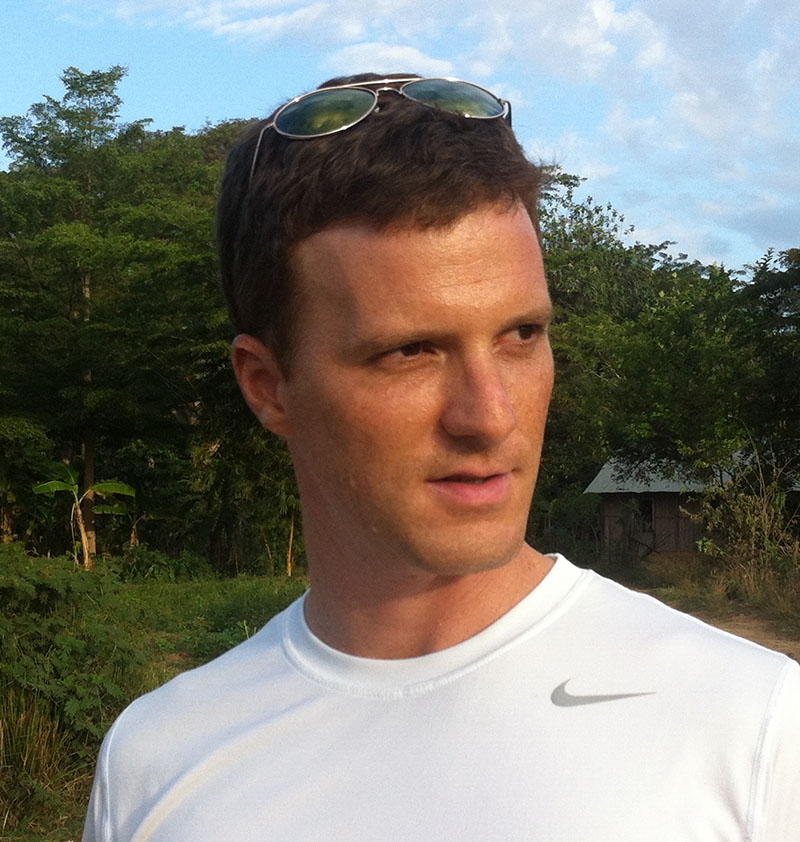
Tim McCollum – Madécasse Chocolates
Now that’s an interesting comment. And commendable. Because for many of us, myself included, we tend to dig pretty deeply for personal happiness first, before contributing to other causes. But… that’s a topic for another magazine (Psychology Today…or O Magazine, perhaps?).
A Higher Education
Tim’s turn down a different, more self-enlightened path started during his sophomore year in high school, when his French teacher asked Joe, a former student, to talk to Tim’s class about the Peace Corps. Joe was home in the States on a vacation from the Peace Corps in Togo, and his little speech did, indeed, plant a seed in Tim’s mind.
Five years later, Tim found himself studying abroad in beautiful Scotland, during his junior year of college. His first trip out of the US opened his eyes still further. Experiencing first-hand all the cultural differences of another country, and some surprising similarities, intrigued him. For study breaks, he’d hike a mountain three to four times a week, at a park off-campus.
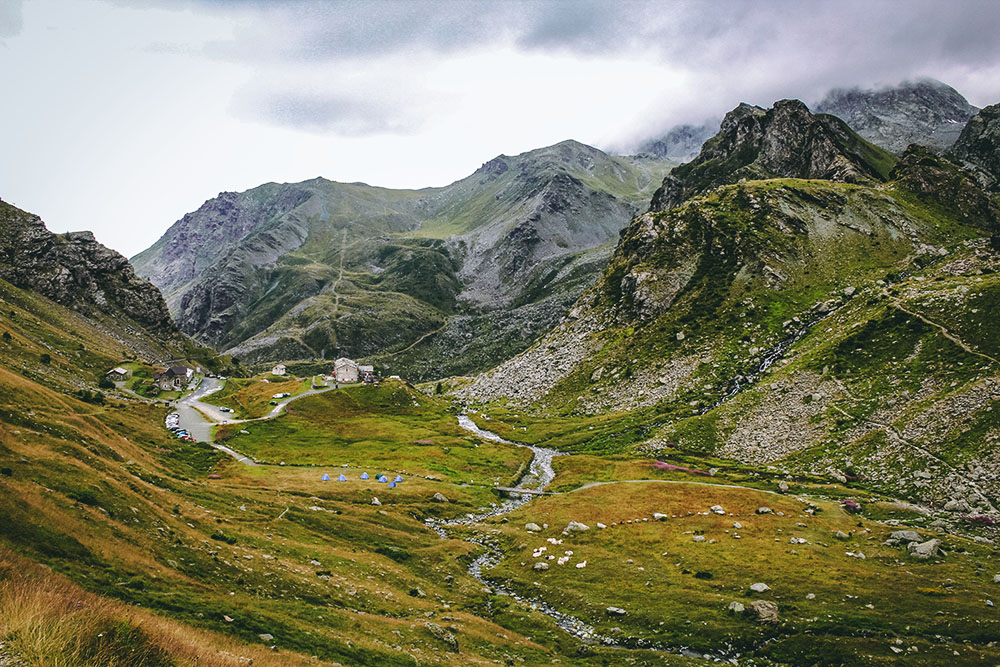
Rolling hills of Scotland
“The view and silence were spectacular. Sitting on top of the mountain, one day I started thinking about my professional career. Now that I knew baseball wasn’t an option, I had to think about other possibilities. I knew what I didn’t want – corporate, traditional – but didn’t know what I did want.”
At a high level, however, Tim knew he wanted to make a difference in the world, to do something that forced him out of his comfort zone and exposed him to things much different than anything he knew up to that point in life. Also a must… a little red-blooded adventure.
“Out of nowhere, ‘Peace Corps’ popped into my head –– that thing Joe, who visited my sophomore class, told me about. I didn’t know anything else about it, but it seemed more interesting than other options.”
Funny how a seed planted five years earlier quietly reaped a harvest at exactly the right time. So, the summer between his junior and senior years in college, Tim volunteered, teaching English in Mexico for a month. It blew him away, and after that adventure, he figured the Peace Corps would be a more intense version of his month in Mexico. He never considered anything else moving forward.

Quality cacao..helping improve farmers’ lives, one pod at a time.
In 1999, the Peace Corps stationed him in Madagascar to teach kids, and, just like Scotland and Mexico before, this country made an impact, but on a much deeper level. Madagascar, one of the top ten poorest countries in the world, offered a completely unique perspective. It also inspired, and Tim began brainstorming ways he could help lift Madagascar up from its impoverished state.
He thought perhaps creating chocolate in Madagascar could help alleviate some of the poverty, a thought affirmed once he learned the real value chain of a chocolate bar, as he realized just how little money made its way back to the farmer.
Clearly, cacao needed to be sourced ethically, yes, but much more than that, he believed cocoa production should change farmers’ lives.
Tim’s time in the Peace Corps, exposed to serious poverty on a daily basis, decisively changed the way he looked at business, industry, and profit. When he returned to the U.S. in 2001, a bachelor’s degree plus a wealth of Peace Corps experience in tow, he now hungered for a little “for-profit” work. American Express shined like a beacon to him… large and international. He accepted a job, and thrived, in the Amex Global Marketing Department.
“I knew I could learn a lot there and grow from it. I really enjoyed it for the 6 years I was there, even though I had a feeling, ultimately, I’d end up doing something that involved Madagascar.”
While Tim worked at American Express, his brother, an early believer in Tim’s chocolate mission, attended NYU Stern School of Business. Together they, along with the other Madécasse co-founder, Brett Beach, created a business plan, entered it into a competition at Stern, and won. The prize included $25,000 in seed money.
More than the money, however, the endorsement from people who knew a lot more than they did made the largest impact. It told them they weren’t entirely crazy.
“I think we won because it was probably clear to the judges we cared about the issue (poverty in Madagascar) and we were presenting a solution that could help fix it (bean-to-bar at origin). That is, of course, my own speculation as to why we won … it’s hard to say.”
Tim felt a bit terrified at first to leave American Express. The company treated him well, paid well, and he’d spent six years building up a career there. He most certainly did not take the decision to walk away lightly. But the next day after his big competition win, Tim told his employer he could only work another 4 weeks. Madécasse called.
Tim and Brett officially founded the company in Brooklyn in 2009, but the first months, and even years, proved challenging. Let’s just say they didn’t know what they didn’t know. Neither moved to Madagascar, but he and Brett rotated trips in and out of the country.
They wanted to make as large a social impact as possible there by doing everything from scratch, start-to-finish, in Madagascar.
Together they slowly built a network and gained a deeper understanding of what truly needed to be done for success. Both curious by nature, Tim and Brett asked a lot of questions and rarely accepted industry norms. Eventually, it all started to pay off. In the company’s third year, they hired their first full-time employee.
Madécasse now employees 7 full time employees and 5 part-time employees between the U.S. and Madagascar. 4 members on the current team were Peace Corps volunteers in Madagascar. And one starts their Peace Corps Service in February, 2018! The only American employed in Madagascar, Nate Engle, is one of the former Peace Corps volunteers and “an over achieving expat, “ as Tim puts it.
While Tim is the only original founder, everyone on the team shares the same spirit, purpose, and ownership of a founder.
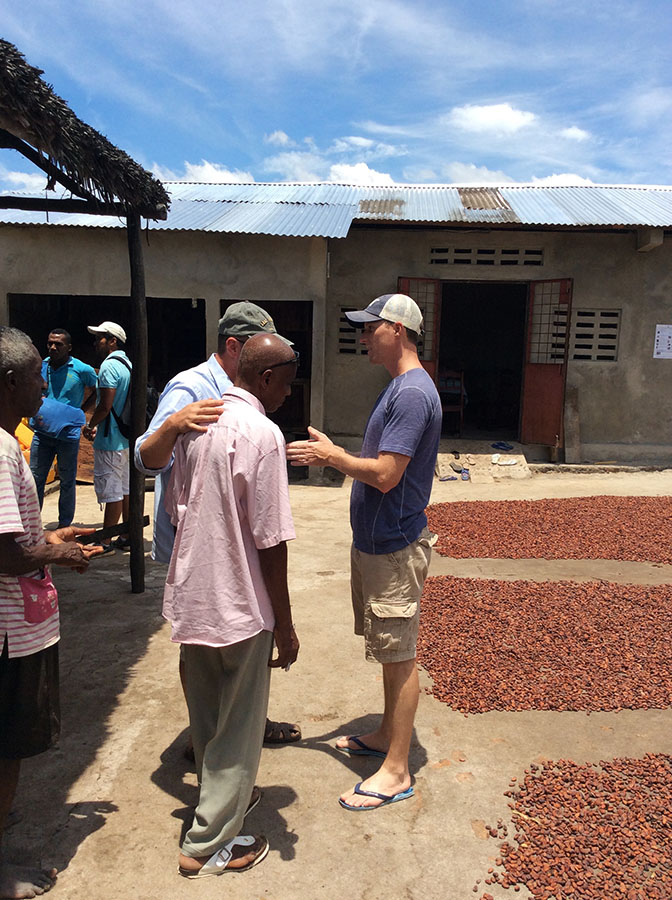
Tim working directly with Malagasy farmers
“We started Madécasse to change the way the world experiences chocolate – from the cocoa farmer to the end consumer and everyone in between.”
All the experience and perspective gained via their work in the Peace Corps helped Tim and his team do just that.
“Our outside perspective, largely through our time in the Peace Corps, has enabled us to connect dots we likely never would have noticed if we had come from within the chocolate industry.”
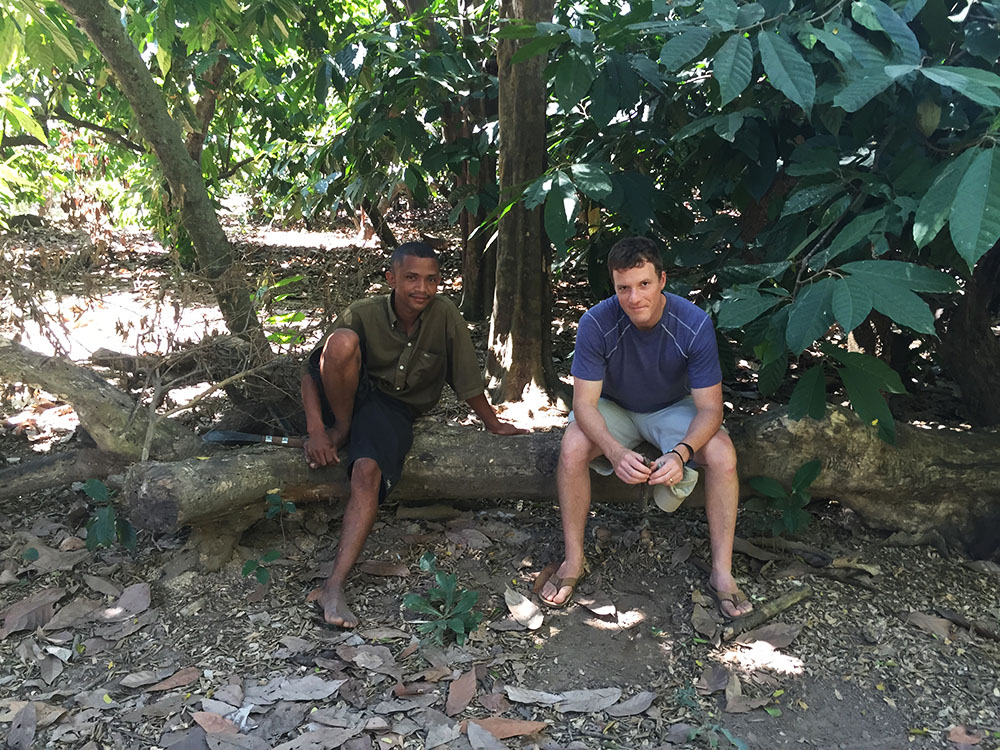
Madécasse’s perspective creates industry change
Invaluable Experience
An “insider’s” perspective on a country is invaluable when working to create change from the inside out within that country. Or as Madécasse puts it, “flipping chocolate right side up.”
Here are a few interesting snippets from Tim, on what he learned while with the Peace Corps. On one level or another, this experience helped Madécasse learn how to initiate effective change within the industry.
STAYING PUT MATTERS
“Vazaha means foreigner in Malagasy. Depending on tone, this can be pejorative. OK, so it’s almost always used as a slur. I got ‘vazaha’ a lot during my first few weeks and months in my village. That’s what people would yell at me on my way to school, at the market buying fish, on the bus, etc.”
But after about 6 months, people stopped calling him “vazaha.” The same people that used to call him “vazaha” started to call him “zoky,” if they were younger. That means older brother, and it’s a term of respect and endearment. If they were older they called Tim “zandry,” which means little brother. Again, very respectful.
Tim learned anything is possible if you’re not in a hurry. It also taught him the importance of showing up. In person. Everyday. Again and again.
BELOW THE SURFACE
“Most people in Africa, definitely in Madagascar, view foreigners as people who drop in from the clouds (literally) for a few days or weeks, impart some “wisdom,” take pictures, then vanish and never come back. I began making serious, lasting friendships (18 years and counting) with people in Madagascar I had nothing in common with on the surface.”
This taught Tim that humans, regardless of circumstance, are united deep below the surface of things.
LOSING THE WESTERN LENS
“In an effort to lower malaria, I saw well-meaning NGO’s distribute mosquito nets treated with mosquito repellent to rural populations. I then saw rural populations use the mosquito nets to catch fish and release chemicals into the water as a result.”
Tim can’t remember ever seeing a person in his village (other than himself) with a mosquito net around a bed. He learned to look at problems from the perspective of the people affected, instead of simply through his own inherent western lens.
CULTURAL DIFFERENCES WITHIN EDUCATION
“I also saw class sizes reduce by 75% between 3rd grade and 6th grade because of elementary school dropouts. We don’t even have that phrase –– ‘elementary school dropouts,’ in our culture.”
The 6th grade classes Tim taught had over one hundred students. His high school classes had fifteen.
“Parents either didn’t value education or couldn’t afford to keep their kids in school.”
Tim learned that knowledge for the sake of knowledge doesn’t work in a country with 90% unemployment.
AN INEFFECTIVE SOLUTION IS NO SOLUTION
“During a cholera outbreak, I saw the government hand out doxycycline to a community as a mandatory preventive. Doxycycline is a curative.”
Tim realized firsthand that the government wouldn’t solve very many problems in Madagascar.
Madécasse Moving Forward
With the combined experience and insight of the Madécasse staff, more change is certainly on its way within the chocolate industry.
“Only two things have ever solved systemic poverty, in any country, at any moment in history. 1) basic employment/income and 2) the expectation that if the basic employment/income is performed well, there will be further opportunity. The former deals with being able to afford food, clothing, shelter – independent survival. The latter deals with hope, aspiration, trust and the future.
Thankfully, as a big boon to their chocolate-making mission, Madécasse quickly discovered that its Madagascar harvests produce some of the most flavorful cocoa in the world.
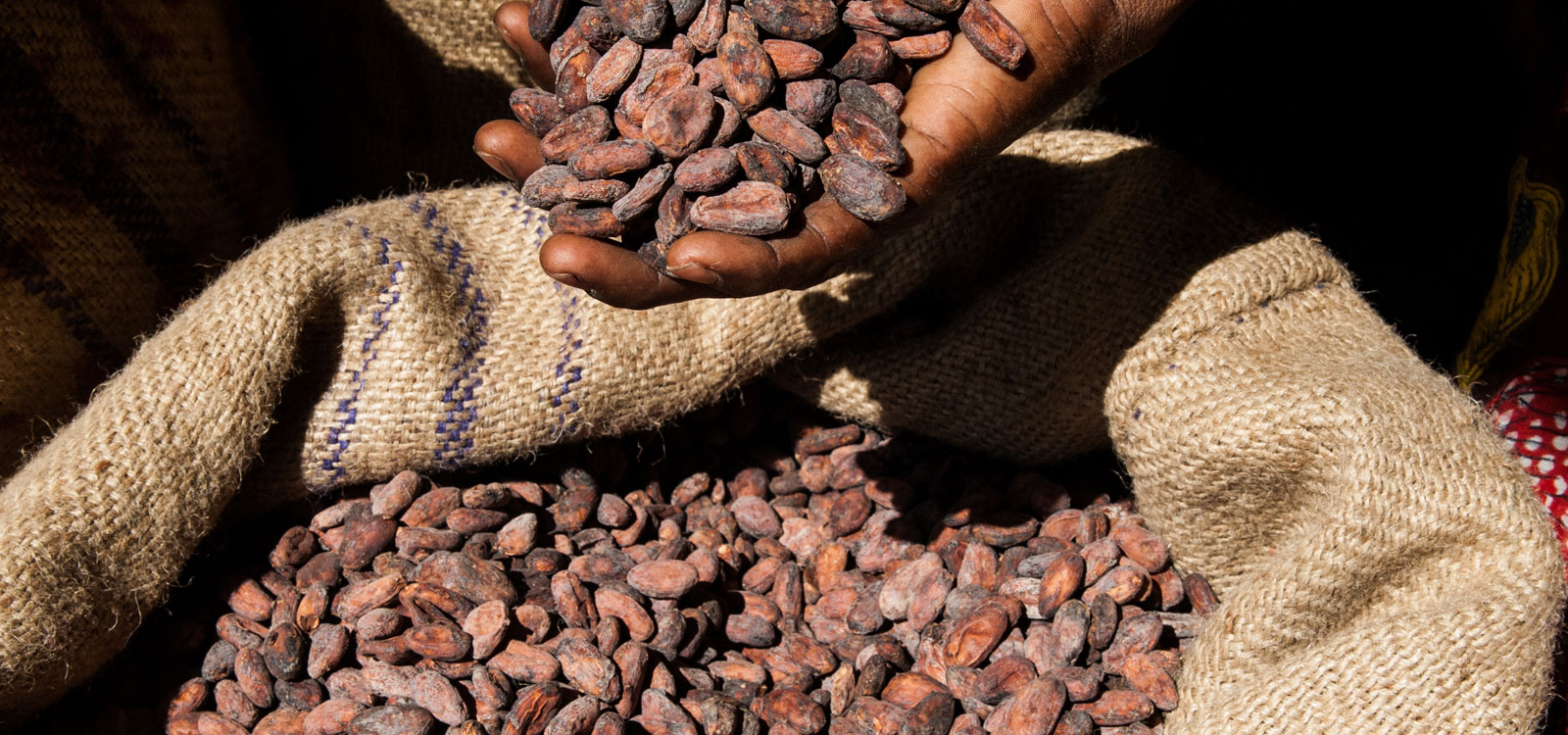
Heirloom simply has more flavor
“Heirloom is earth’s original variety of cocoa. It simply has more flavor. Third graders can taste the difference.”
For a quick refresher, Heirloom basically refers to an original variety of cacao, never hybridized. There are three genetic varieties of cacao: foraster, trinatario and criollo – or heirloom.
“Forastero is about 85% of the global crop. You can say 85% of chocolate on the market is made from it. The flavor profile is bland and boring. It tastes like chocolate, so it’s not bad. Just blah.”
“Criollo – or Heirloom – can be considered fine flavor chocolate, and it represents less than 5% of the world’s cocoa supply. It’s more delicate and typically has considerably more flavor.”
“Trinatario is a hybrid between Forastero and Criollo. It’s better than Forastero but not great.”
Simply put, harvesting Heirloom cacao enables Madécasse to send a better-quality product to market. How Madécasse better engages farmers in the entire process, however, is anything but simple.
“Typically, farmers are completely disconnected from the end-product. We connect them. Not through giving them chocolate to eat (we do that too) but by training them on how their cocoa is made into chocolate.”
Farmers then pick up on the flavor nuances and begin to understand the implications of proper fermentation and drying.
Indeed, the entire process eventually focused on getting a better product to market, while doing so in a way that benefits the entire supply chain… something Madécasse thinks few other companies can do.
The company provides ongoing technical support, organic audits and ethical audits. They also bring cacao farmers from the northern part of Madagascar to the capital, home to Madecasse’s offices and labs, where they teach farmers how to make chocolate on small-batch equipment.
Over the years, they developed a Direct Trade sourcing model with farmers, also an extremely important part of the end-to-end process.
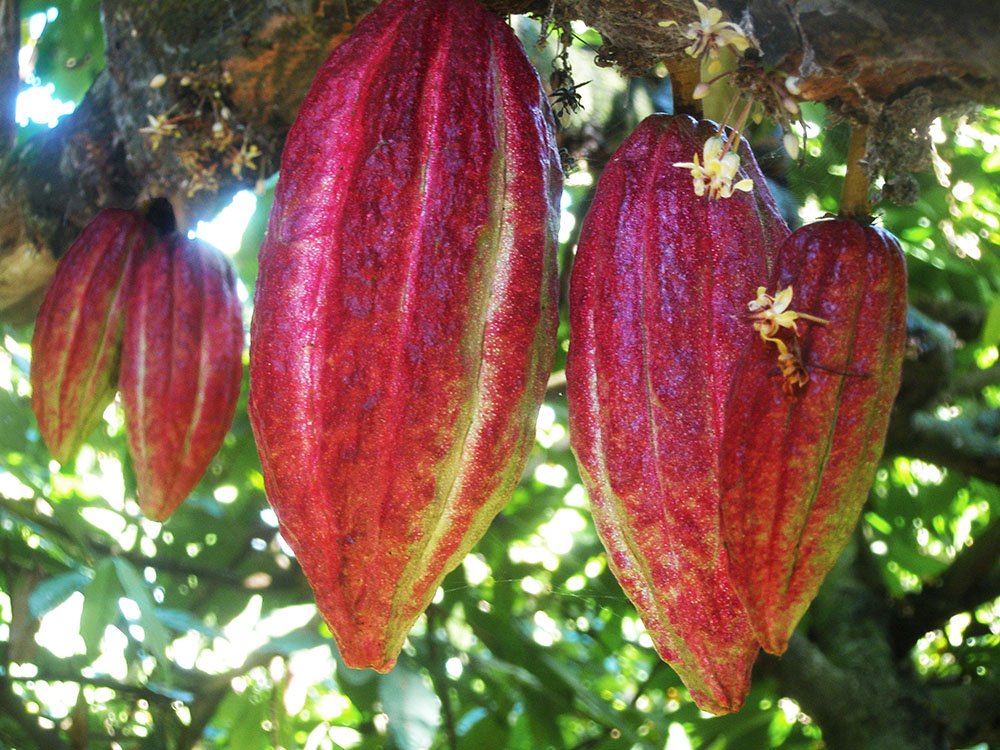
Ready for harvest
“We used to be “Fair Trade” certified, and this is a good concept on paper, but through implementation we came to realize that it’s a solution created in the northern hemisphere (where chocolate is made and consumed), to deal with problems in the southern hemisphere (where cocoa is grown and harvested).”
We frequently discuss Fair Trade and Direct Trade in Chocolate Connoisseur here, and when I asked Tim the difference between the two, he dove right in to offer his own take.
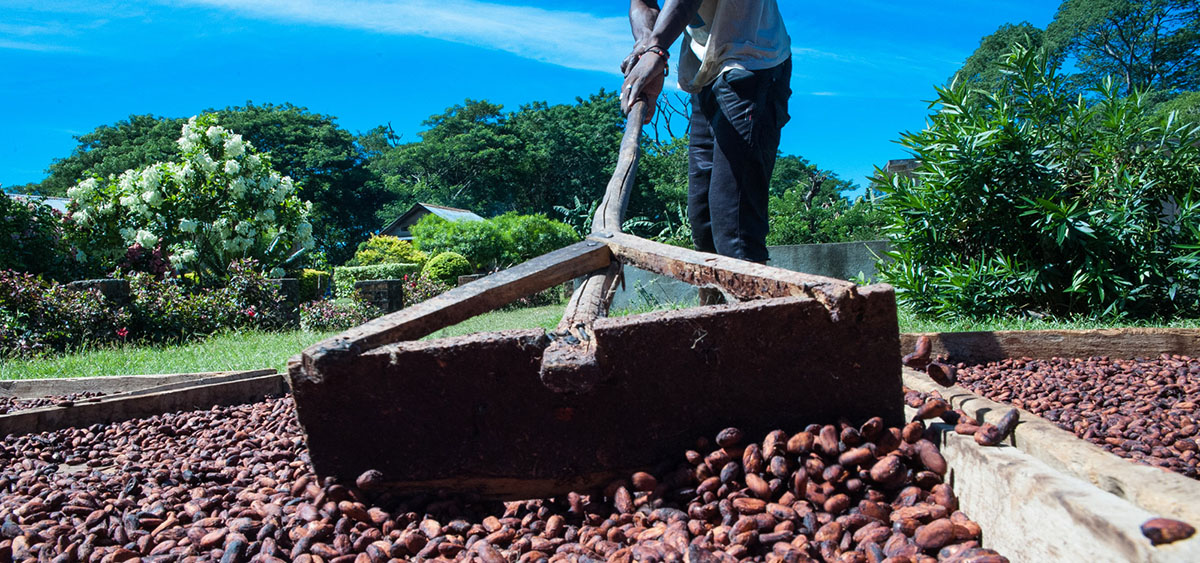
Direct trade puts more money in farmers’ pockets
Tim says the typical commodity cacao (roughly ninety percent of the world’s supply) tastes the same and has a boring flavor compared to Heirloom cacao. Being a commodity, the price is driven down to about $1.90 per kilogram. The average small holder holds one to three hectares and produces thirty kilograms per month.
“You can do the math on the income a cocoa farmer gets from that. It’s not enough to feed themselves or their families.”
Fair trade assigns a price premium to the $1.90, a premium of approximately ten percent.
“Ten percent on top of shit wages doesn’t change the underlying problem. It may make people who don’t know much about the situation feel better. But it’s not a solution to the problem.”
Madécasse is more interested in real solutions, and instead pays $3.25 per kilogram. They can get the price that high for two reasons: first, they grow better quality cacao, which produces a better bar of chocolate. They can easily justify paying more when the cacao creates a superior finished product.
Second, Madécasse needs no middlemen in their supply chain; instead, money goes from their bank account directly into the farmer’s pocket.
By being integrated, day-in and day-out, with cocoa farming communities, they’ve developed trust with farmers, writing their own playbook together.
“Farmers get 60% more income for themselves. And we get better quality and consistency.”
Back to the Drawing Board
Tim and Brett started Madécasse with the purpose of making chocolate in Madagascar, to help Madagascar, and as intended, from 2009 – 2015 they made 100% of their chocolate locally in Madagascar with a small contract manufacturer.
“That founding principle, of making chocolate in Madagascar, is as true on Day 3,285 as it was on Day One. The difference is that on Day One, we didn’t realize the limitations, challenges, struggles of manufacturing in Madagascar (infrastructure, skilled labor, capital requirements).”
By around Day 2,750 they most certainly encountered these limitations first hand, but they believed none of the reasons were show stoppers… only obstacles. Madécasse also believed those obstacles could be overcome if they went back to the drawing board and set up a state-of-the art factory, properly, from square one.
So, for much of 2016 and all of 2017, Madécasse produced all its chocolate in Italy with a different contract manufacturer, while building their new factory back in Madagascar.
Madécasse co-developed the recipes and spent time in the small manufacturer’s factory and lab, adjusting processes to match their target flavor profile.
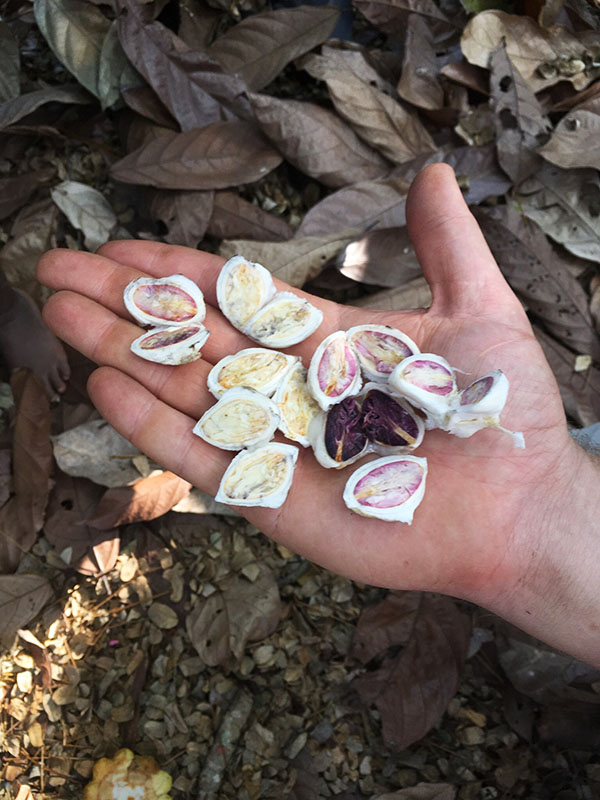
Madécasse has fine-tuned its flavor profile
Once they found a match, it was simply a matter of following protocol at the factory, and they established systems to ensure consistency. Madécasse also set specifications for the cacao, and they work with farmers directly to ensure consistent post-harvest handling (fermentation and drying).
Right now, the factory project sits right on track, and they expect to once again make chocolate in Madagascar by June 2018.
In the upcoming months, they’ll also be training ordinary Malagasy people (who don’t even eat chocolate regularly at this point) on how to make chocolate. In the meantime, however, they’ve also doubled down on the work they do directly with cacao farmers in Madagascar, and they’re growing distribution in the U.S. and EU.
It’s All in a Name
So how did they come up with the name Madécasse anyway?
“Well, we had a better name, a more phonetic name when we started (The Red Island). Be then we received a cease and desist letter from an olive oil company in Australia. We didn’t have the money to hire an attorney or the wherewithal to realize we were in the right. So, we changed the business name at that point.”
The word Madécasse appears in 19th century references to both Madagascar and the people of Madagascar, before the words Madagascar and Malagasy were commonly used.
Bring on the Chocolate!
Now, let’s talk Madécasse chocolate!
All of their chocolate bars are made with organic cocoa, and gluten-free, non-GMO ingredients. Also, with the exception of Honey Crystal, all Madécasse bars are also vegan.
“Sea Salt and Nibs is our best seller because it’s a lower cocoa percentage (63%) which makes it approachable for milk chocolate and dark chocolate eaters.
It’s also a great gateway into the world of heirloom, fine flavor chocolate. The fruit notes are hard to miss.”
The very first bar Madécasse ever made, years ago, also happens to be the variety I chose to sample for this article. (I had a difficult time choosing, given the variety.) I’m happy to tell you, no disappointment here… a smooth yet potent chocolate experience through and through. Yes, 70% is potent for me, so don’t criticize, you 90% lovers out there!
And don’t just stop at dark chocolate, check out their mint crunch, toasted coconut and more…
As for the packaging, I absolutely love it, and asked Tim exactly how it evolved.
“We weren’t selling especially well a couple of years ago. We knew the quality was superior to other products on the shelf. We figured the brand was differentiated, but at the end of the day, we had to communicate more simply with consumers.”
This equated to bringing in the loveable…you guessed it, lemur. They would demo the chocolate regularly and engage directly with consumers. Whenever the word ‘Madagascar’ came up, they were surprised at how many people would ask something like, “Don’t they have lemurs there?”
“So, we focused the new packaging concepts on the lemur. If Americans have an iconic image of Madagascar, it’s probably the lemur. The new packaging increased some store sales by 90%.”
Lemurs hold extra special relevance to the brand, given that cacao forests often serve as suitable habitats for endangered lemurs (there are four species of lemurs living in cacao forests where Madécasse sources beans). This helps solve an important conservation and sustainability problem.
Madécasse Showstoppers
You can connect with Madécasse directly at the Natural Products Expo West, The Summer Fancy Show or The Sweets and Snacks Show, but if you’d like to sample their chocolate, no need to wait until then.
You can jump online and check out not only their bars, but their discs, vanilla beans and extract, and gift sets, perfect for the holidays.
What Lies Ahead
As far for any future plans?
“We’ve got a factory to commission in 2018. We’ve got 2 new products to launch in 2018. 2,000 more retail doors to tackle. And we’ve got to increase our cocoa purchases/work with farmers by 30% from last year to make it happen. “
That’s a lot in the works, but when the passion that propels your company forward ties directly into your mission to produce high quality chocolate in Madagascar, and to continue making such a positive impact on farmers and the entire value chain… we don’t doubt for a second that Madécasse will continue its success. Both the chocolate world, and Madagascar, will be counting on it!


